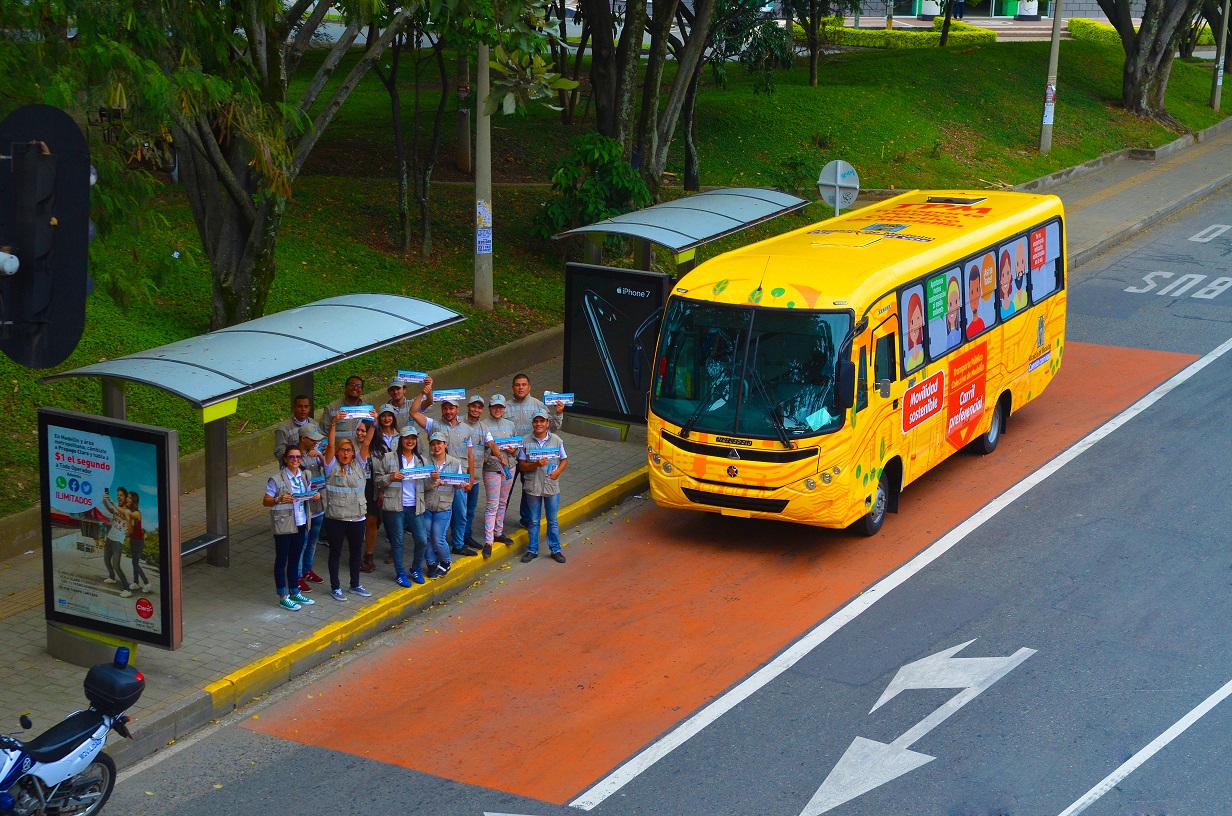
Photo: Alcaldia-de-Medellín
Why Medellin is ‘counting on’ citizens to improve its sustainability
17 May 2017
by Jonathan Andrews
Jonathan Andrews spoke to Juan Esteban Martinez Ruiz, Chief Executive of Mobility Projects, Medellin about the city’s ambitious new development plan
The city has had a metro for more than 30 years and has since implemented metro cables and a BRT system. What are the remaining mobility challenges that Medellin faces?
Faced with the significant problems associated with transport–such as energy consumption, air pollution, the excessive growth of car ownership, congestion, accidents, inappropriate use of public spaces, social exclusion, the deterioration of health, the lack of knowledge of the rules of the road, unorganised urban renovation and consolidation, the deterioration of green spaces and biodiversity and high transport costs, among other things–the municipality of Medellin has adopted changes and incorporated a new vision for the structure of the city. This is expressed in sustainable transport, and is founded on society, economy and the environment–both inclusive and participatory–based on the principle of sustainability in which non-motorised modes of transport and the use of public transport are prioritised over using one’s own vehicle.
It is important to emphasise that transport-related problems and air quality can be tackled through integral policies that provide solutions to multiple problems. Therefore, in the Development Plan 2016–2019–‘Medellin is counting on you’–the strategic plans include sustainable transport, the objective of which is to integrate the systems and modes of transport in Medellin with the existing infrastructure. This will aim to provide citizens with easy access to public transport that is regular, safe and of high quality, which adds to quality of life and to the sustainability of the city.
How much of a part of Medellin’s mobility strategy is focused on improving mobility and reducing pollution and at the same time reducing inequality and ‘access to the city’ or social inclusion and integration?
The local government has prepared various planning instruments focused upon executing numerous convincing actions in terms of sustainable transport. These widen the possibilities for citizens to get around using safe and accessible forms of transport through strategies that aim to improve transport conditions and the quality of air by reducing emissions produced by modes of transport. In addition, they give priority to non-motorised modes of transport. These planning instruments include the Development Plan 2016–2019 ‘Medellin is counting on you’, the plans relating to safe transport in Medellin 2014–2020, the strategic transport plan, the master plan for transport in metropolitan areas, which includes the city of Medellin, amongst others.
We consider it important to emphasise the following:
- The city is looking to achieve infrastructure that favours the movement of people using non-motorised modes of transport;
- Transforming the operation of the collective public transport system to integrate it with the larger system, under the principles of efficiency, quality, economy, accessibility and sustainability;
- Encouraging good environmental practice in order to generate social conscience regarding air quality and to contribute to the improvement of air quality;
- Strengthening the use and culture of public and private bicycles and non-motorised transport;
- Recognising the importance of safe modes of transport, which aims to improve the conditions regarding accessibility and road safety of the population.

It’s often the case that when a neighbourhood is connected with better public transport that house prices increase as a result. Despite the Metro Cable’s good intentions to increase connectivity and inclusion, has this also had a detrimental affect on housing affordability in the process?
Every time an urban intervention takes place, the conditions of the sector also improve, therefore increasing the value of each square metre, and therefore many properties become commercial properties. Often when this happens, the public sell their properties and take advantage of this as an economic opportunity. It should be noted that citizens do this voluntarily.
What are the remaining mobility challenges in Medellin?
In terms of transport, Medellin has shown evidence of developments; amongst those that most stand out, is the constant expansion of a massive multimodal transport system, which is a pioneer in the country. However, the city must resolve situations that appear alarming in the near future and that should also be altered to fall in line with the plans for a sustainable city in the long-term, with sustainable meaning that is economically reasonable and socially and environmentally friendly.
The Development Plan 2016–2019 is composed of various different regional initiatives that aim to improve connectivity, achieve better efficiency in terms of logistics, improve the structure of the railway system and strengthen centrality. This will be achieved through the Regional and Metropolitan Management Plan, which constitutes a fundamental link for users through the construction and consolidation of the transport infrastructure.






